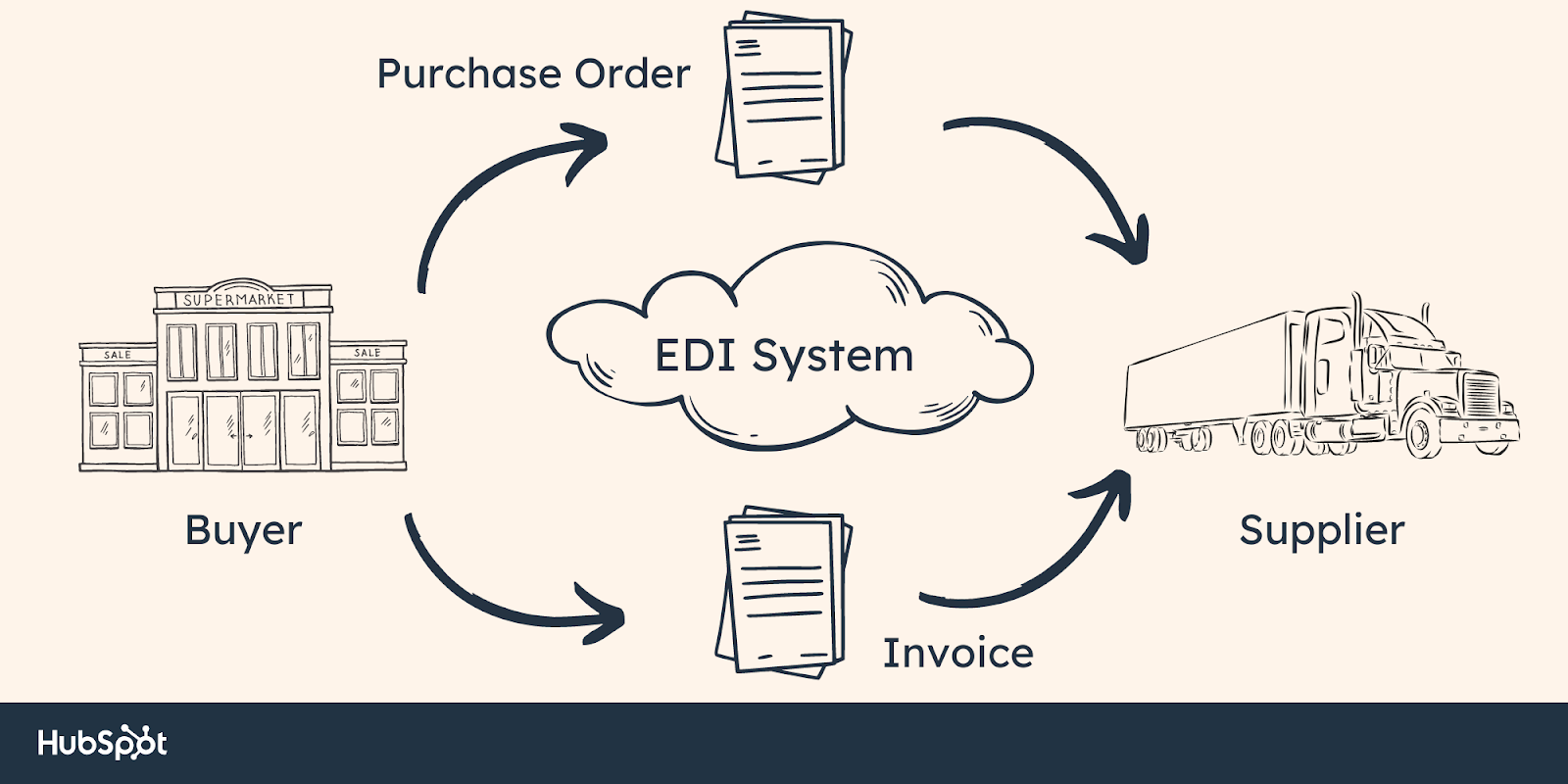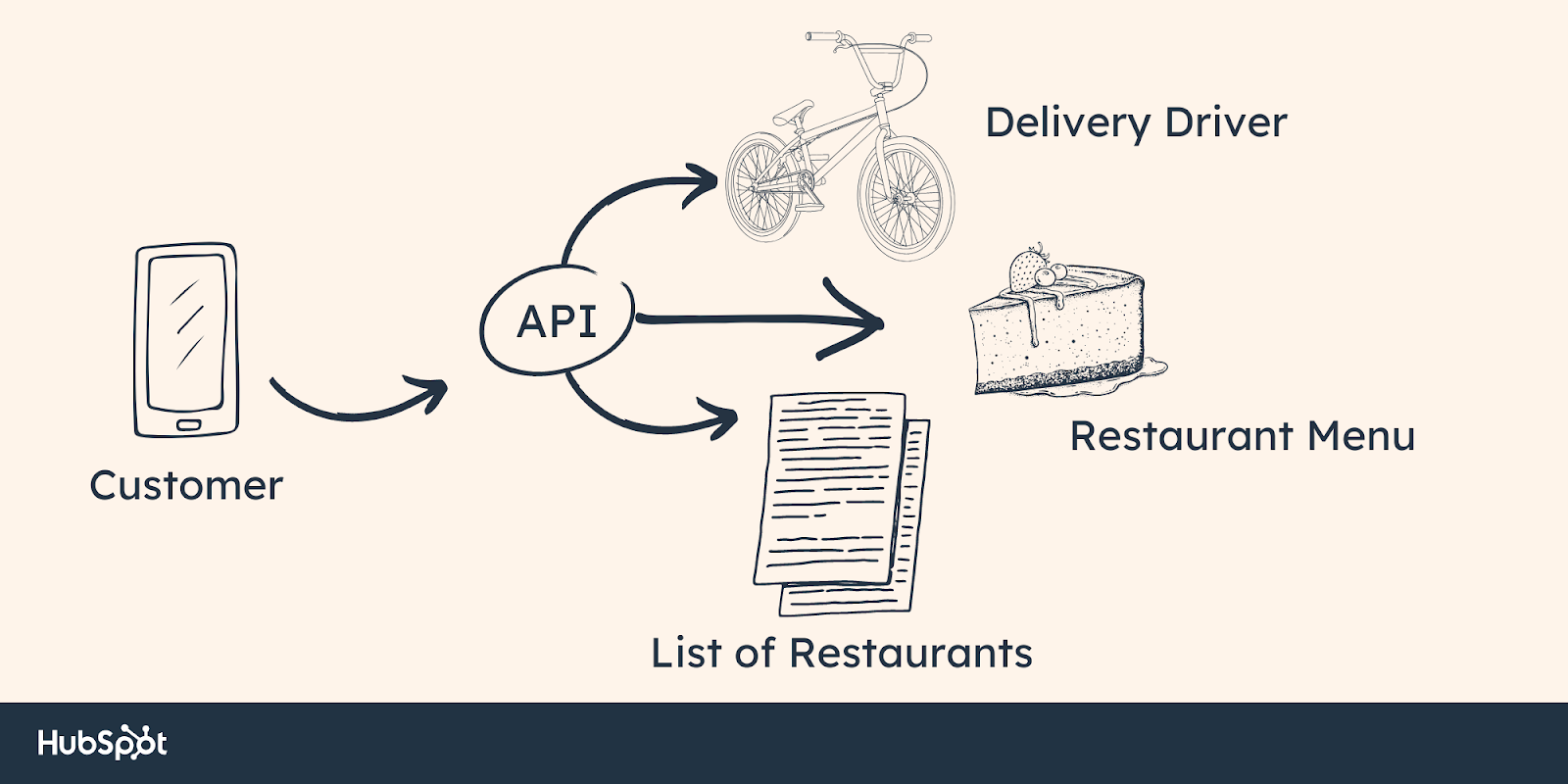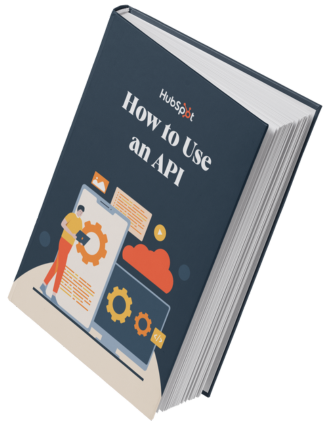In this blog post, we’ll explore the differences between EDIs and APIs. You can then decide which technology is best for your business’ supply chain solutions.
EDIs vs. APIs
Electronic Data Interchanges (EDIs) allow businesses to transfer digital documents with their partners in a standardized format. Meanwhile, Application Programming Interfaces (APIs) give specific instructions to help software applications communicate with each other.
The two technologies differ in who they communicate with. APIs work as a messenger between services within the application itself. EDIs are messengers that allow two different businesses and organizations to communicate.
EDIs: How do they work?
Let’s take a look at how EDI works.
To improve business transactions, EDI replaces paper documents and manual processes. Think about a business that sells goods to consumers, such as Target. To stock their shelves with items, they have to work with suppliers.
Before EDI existed, buyers had to call their suppliers to verbally communicate their orders. The supplier then had to manually enter the order in a system and generate an invoice to send to Target.

The creation of EDI improved this process significantly. Target and its suppliers can now talk to each other via software. EDI standardized communication protocols allow their two computers to communicate securely.
Target can place an order, and the supplier’s computer can read it and generate an invoice. Target’s computer can also read and process the invoice.
As you can see, EDI has simplified how businesses communicate with one another. However, they aren’t perfect. Let’s take a look at their advantages and disadvantages.
EDI Advantages
EDI offers several benefits for B2B communications and supply chain logistics. Check out some of the benefits of using an EDI:
- Greater efficiency. By eliminating manual data entry, EDIs can decrease the risks of human errors. They also speed up processing and shipping times.
- Reduced costs. An EDI is a paperless solution that reduces the costs associated with mail, print, and ink. The roles associated with these tasks can also be eliminated, reducing labor costs.
- Increased security. EDIs leverage encryption and advanced security protocols. This safeguards data during transfer, drastically lowering the risk of cyber threats.
EDI Disadvantages
Along with the many advantages of using EDIs, let’s explore some disadvantages.
- Startup costs. EDIs are relatively expensive to implement. The initial cost needed for the required hardware, software, and employee training is high. It’s also time-consuming, as it can take 3-6 months before the technology is ready for work. Additionally, EDIs require a specialized developer to build and maintain their system.
- Standardization. We know that EDI requires all partners to have standard communication protocols. This can restrict your organization’s ability to customize its own technology systems.
- Integration challenges. EDI was invented in the late 1960s. Its technology lacks the required updates needed to be compatible with newer technology. This prevents companies looking to invest in newer systems from using the technology. It also makes integrating the technology with other applications difficult.
APIs: How do they work?
With APIs, diverse software applications can communicate with one another by sharing data or creating custom capabilities. By allowing these programs to use a common language, integration is simple and efficient.
Imagine you want to make a food delivery app. Your application must be able to link with your partners’ websites for their menus, establish connections, and manage various delivery drivers.

Using an API with your application’s operations could benefit you in many ways. It will streamline the ordering and delivery process, and the API will reduce inaccuracies for improved customer satisfaction. You can also expand your business with other food providers through this technology.
API Advantages
Leveraging application programming interfaces offers numerous advantages to both businesses and developers. Here are the primary perks:
- Saving time. APIs reduce development and deployment time by automating repeated tasks and streamlining workflows.
- Efficient data. Because APIs are connected to various systems, they can collect data on a larger scale. APIs aren’t reliant on users manually uploading information. Instead, APIs can update data and information as it is collected.
- Flexibility. APIs do not have restrictions on languages or platforms. APIs standardize the communication between different applications, which allows them to be integrated with other systems.
- Scalability. APIs can be integrated with multiple services at a time. This allows businesses to grow without worrying if their technology can keep up.
- Innovation. Due to APIs’ ability to collect data, developers can create new applications leveraging data that already exists.
API Disadvantages
Despite the many advantages of using APIs, there are some drawbacks to consider. Let’s take a look at some of them below:
- Security risks. APIs can result in data breaches, access to sensitive information, and other concerns if they aren’t securely developed.
- Third-party dependent. As APIs are connected to third-party applications, they can be impacted by third-party issues.
- Complexity. APIs are complex technologies. They require a highly specialized developer, which can increase a company’s technical budget.
- Versioning and compatibility. Although APIs aren’t language-dependent, they change over time, requiring companies to update their applications to maintain compatibility.
Which should you use — EDIs or APIs?
EDIs are a great option if your business needs to connect with suppliers to exchange purchase orders or invoices. By leveraging EDIs, the retailer can automate supply chain operations, reducing errors and optimizing efficiency.
Conversely, an API would be the best solution if you want to enable a feature on your application.
Choosing Between APIs vs. EDIs
Ultimately, both APIs and EDIs involve exchanging data between systems. However, they have diverse use cases and advantages. Picking between APIs and EDI requires weighing any business or application's specific needs and demands.
It’s important to consider the pros and cons of each approach carefully before making a decision. After consideration, you can satisfy the objectives of your organization while optimizing efficiency.




![How to get a YouTube API key [tutorial + examples]](https://53.fs1.hubspotusercontent-na1.net/hubfs/53/%5BUse%20(1)-4.webp)
.webp)






